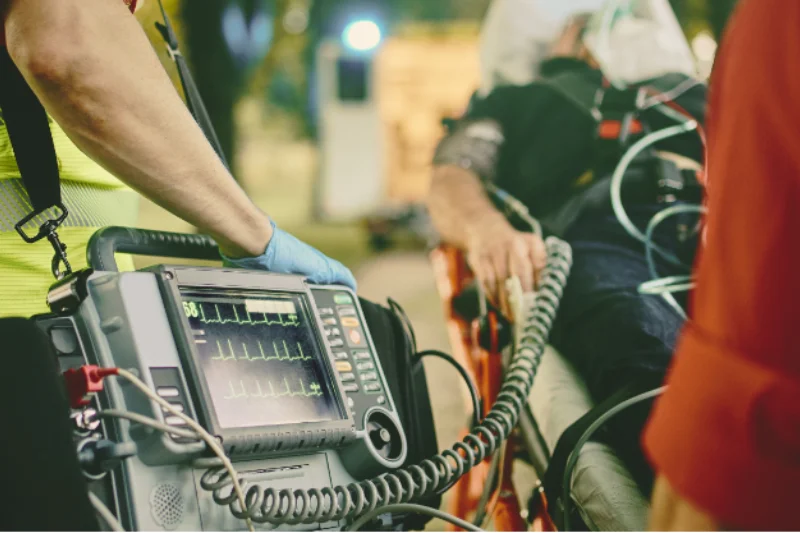Substance Abuse: Understanding the Dangers of Fentanyl Overdose

Table of Contents
Introduction: The Rising Threat of Fentanyl in the Opioid Crisis
The opioid crisis continues to affect communities across the United States, with fentanyl playing a significant role in rising overdose rates. As one of the most potent opioids accessible, fentanyl has a big impact on the problem.
This article attempts to shed light on the dangers of fentanyl overdose, providing insights into its potency, risks, and the prevention measures and treatment alternatives available to those suffering from fentanyl addiction, as understood by a certified addiction professional.
Explaining Fentanyl: Potency, Risks, and Overdose Symptoms

Fentanyl is a synthetic opioid that is up to 50 times more potent than heroin and 100 times stronger than morphine. Because of its enormous power, even a small amount can cause an overdose and death.
Overdose symptoms include reduced breathing, unconsciousness, and bluish skin. When fentanyl is taken with other medications, the risk of overdose increases, frequently without the user’s knowledge.
Understanding the Difference Between Fentanyl and Other Opioids
Fentanyl’s strength distinguishes it from other opioids, making it more hazardous and raising the risk of overdose. Understanding the distinctions between fentanyl and other opioids is critical for both patients and healthcare providers in order to avoid accidental overdoses and provide appropriate treatment. (CDC: Fentanyl Facts)
Recognizing the Signs of Fentanyl Addiction
Recognising the indications of fentanyl addiction is the first step towards getting help from a substance abuse professional. Signs include extreme drug cravings, withdrawal symptoms while not using, prolonged use despite negative consequences, and changes in behaviour or appearance. Early intervention is critical to successful recovery (Mayo Clinic: Recognizing Addiction)
The Impact of Fentanyl Overdose on Individuals and Communities

Individuals who overdose on fentanyl may have life-threatening respiratory depression, coma, and death. To avoid fatal consequences, overdose symptoms must be treated as soon as they appear. People who survive a fentanyl overdose may suffer long-term health consequences and psychological distress.
Communities around the country are dealing with the ramifications of the fentanyl crisis. The increase in overdose deaths puts pressure on emergency services, hospital institutions, and law enforcement. The social and economic implications are staggering, including increased healthcare expenditures, missed productivity, and the emotional toll on families and communities.
Preventative Measures and Treatment Options for Fentanyl Addiction
- Public Education
One important preventative step is public education about the hazards of fentanyl, as recognized by certified addiction professionals.
Raising awareness about the potency of fentanyl, the dangers of overdose, and the significance of seeking treatment for substance dependence can help save lives. Educational efforts should focus on high-risk demographics and highlight the availability of addiction treatment resources.
- Access to Naloxone
Increased access to naloxone, an opioid overdose reversal medicine, is critical to reducing fentanyl overdose deaths.
Naloxone should be easily accessible to first responders, healthcare providers, and anyone at risk of overdose. Training on how to give naloxone can help communities respond more effectively to overdose emergencies.
- Disrupting Illicit Fentanyl Supply
Efforts to interrupt the supply of illicit fentanyl are critical in combating the opioid epidemic. Law enforcement must collaborate to identify and dismantle fentanyl trafficking networks. International cooperation is also required to address the global scope of fentanyl manufacture and distribution.
Treatment Options for Fentanyl Addiction

- Medication-Assisted Treatment (MAT)
Medication-assisted therapy (MAT) is an effective way to treat fentanyl addiction. MAT combines methadone, buprenorphine, and naltrexone with counselling and behavioural therapy. These drugs serve to alleviate cravings and withdrawal symptoms, allowing people to engage in treatment and recovery. (SAMHSA: Medication-Assisted Treatment (MAT))
- Counselling and Support Groups
Addiction recovery relies heavily on counselling and support groups. Individual and group counselling can assist individuals in addressing the root causes of their addiction, developing coping skills, and establishing a supportive network. Support organisations like Narcotics Anonymous offer a sense of community and mutual support to those in recovery.
Conclusion: Addressing the Fentanyl Crisis
The fentanyl crisis is a complex problem that necessitates a comprehensive approach. Understanding the hazards of fentanyl overdose, implementing prevention measures, and assuring access to appropriate treatment are all critical steps towards solving this public health issue.
Working together, we can reduce the impact of fentanyl and help individuals who are addicted. (National Institute on Drug Abuse: Fentanyl DrugFacts)
Work with GMA Interventions
At GMA Interventions, we understand the difficulties associated with fentanyl addiction. Our team of professionals provides specialised services to individuals and families affected by the crisis.
Focusing on holistic rehabilitation, we offer support, education, and treatment alternatives tailored to each person’s needs. Contact us to see how we can help you or a loved one overcome addiction and live a better, drug-free life.